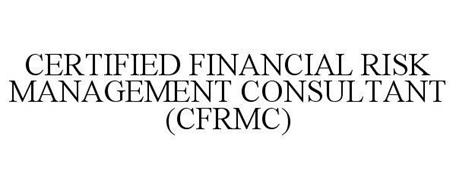

The FRM® Level 1 Exam covers key areas of financial risk management presented in the context of real-world scenarios. This certification gives a firm footing in the principles of analyzing, controlling, or assessing potential credit risk, market risk, and liquidity risk as well as non-market related financial risks. FRM®- Level 1, a certification offered by GARP (Global Association of Risk Professionals), is a base-level qualification for risk management professionals. The Financial Risk Manager (FRM®) designation is a globally recognized standard for those who manage risk.

Candidates must pass Part I of the FRM® Exam in order to have Part II graded.įor more details, visit GARP’s FRM Exam Format Webpage.
#CERTIFIED FINANCIAL RISK MANAGER PROFESSIONAL#
A minimum of two years professional full-time work experience in the area of financial risk management or another related field including, but not limited to, trading, portfolio management, faculty academic, industry research, economics, auditing, risk consulting, and/or risk technology.A passing score on both Part I and Part II of the FRM® Examination.In order to be certified as a Financial Risk Manager (FRM®) and be able to use the FRM acronym after your name, the following are required:.There are no prerequisites to attend the workshop or to appear for the exam.The following snapshots include some of the companies and banks that are known for recruiting most of the FRM candidates.

However, companies in the energy, as well as the IT sector also deal with various types of risk and therefore have a need for a risk management function. Morgan, etc.), insurance industry, credit rating agencies (Moody’s, CRISIL, etc.) and certain financial institutions (organizations that deal with huge amounts of money – hedge funds, investment banks, etc.). The major demand for risk management professionals stems mostly from the banking industry (ICICI bank, J.P. Naturally, the need for risk management would be very rare in a manufacturing company, for instance. They could consult clients by providing them insights on their risk appetite and help them maximize their returns on a risk-adjusted basis. Risk managers may also add value to most organizations by working in certain functions such as – Audit, Treasury, Regulatory Compliance, Accounting & Control.


 0 kommentar(er)
0 kommentar(er)
